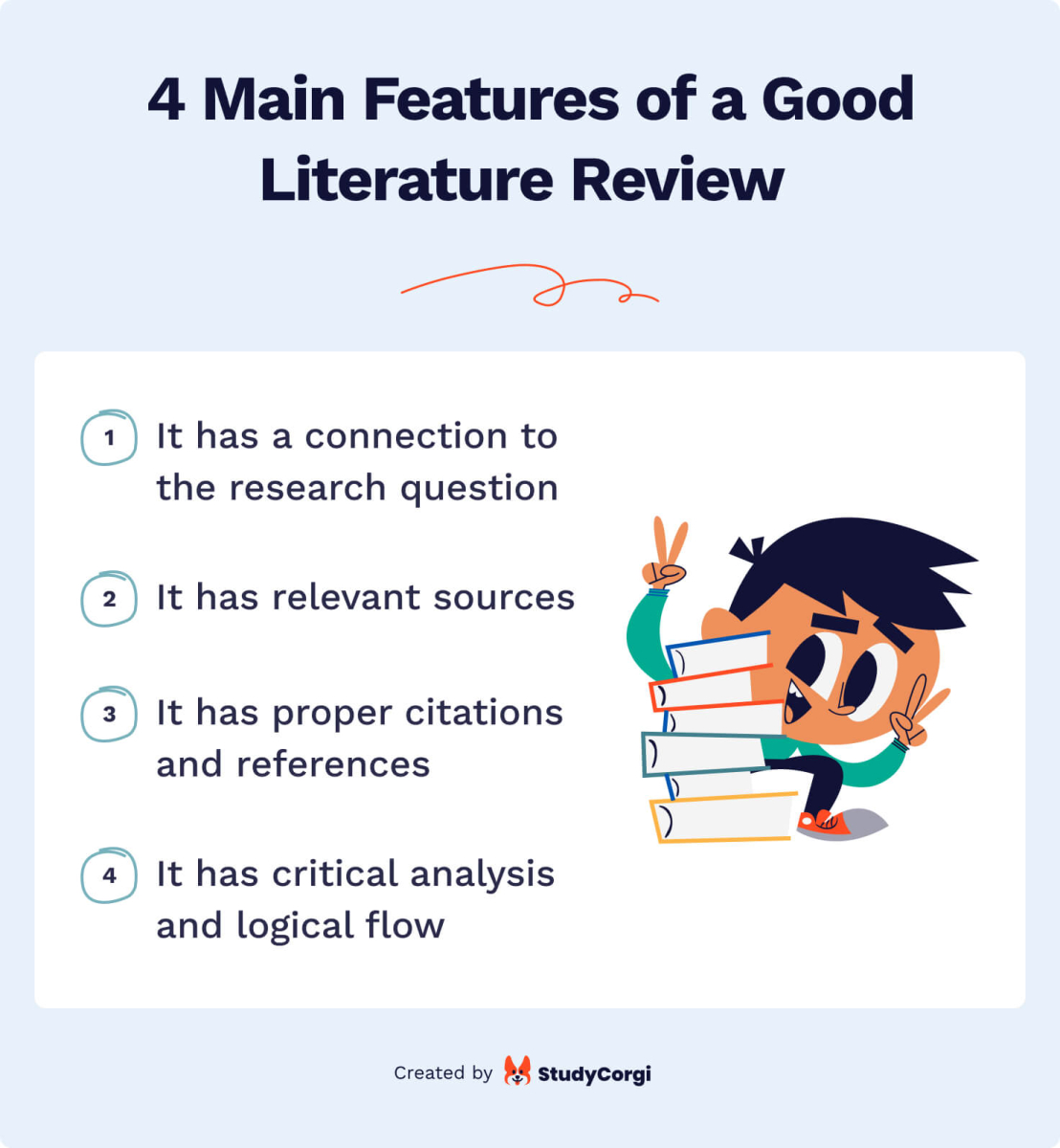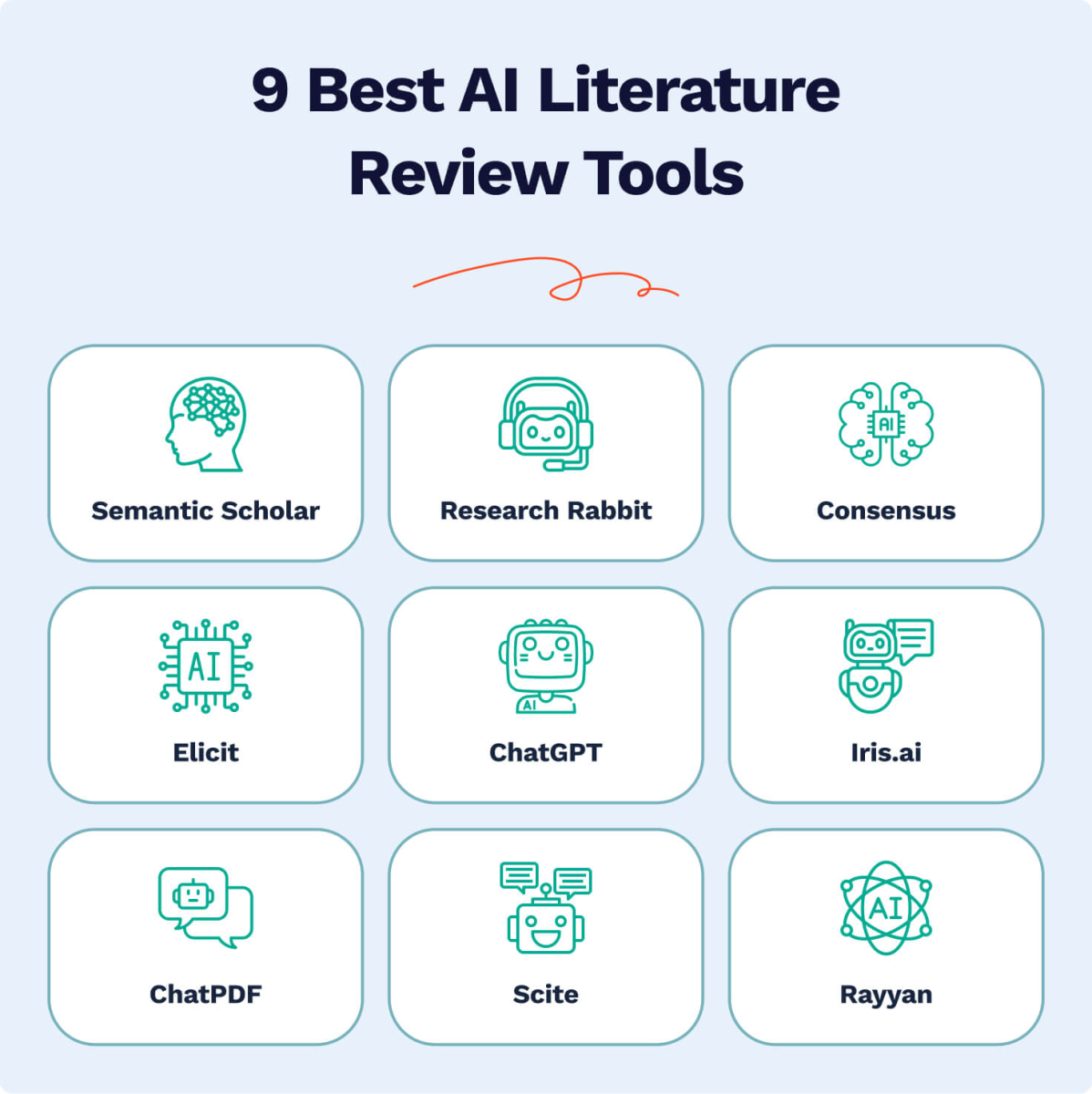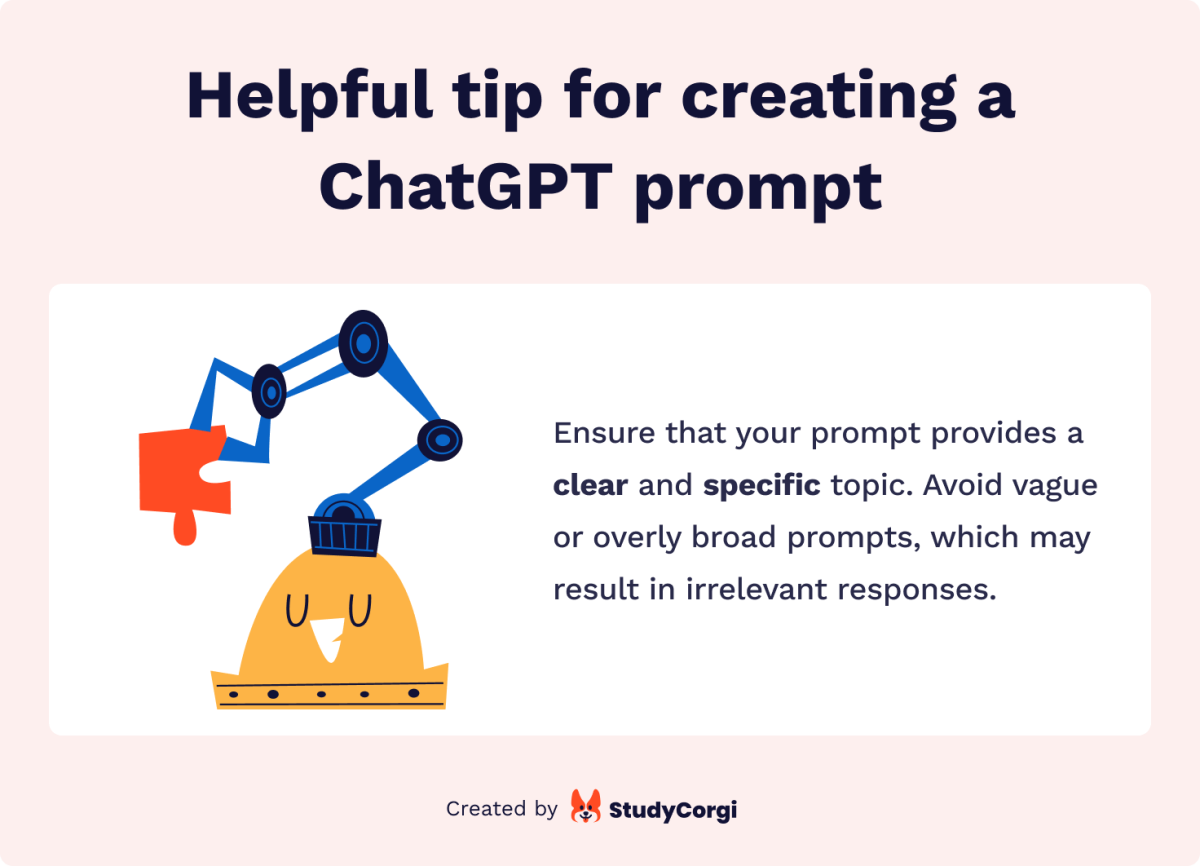Making a literature review is a complicated and time-consuming process. But what if you need to prepare one quickly or are too overwhelmed with other tasks?
Consider using AI for literature review writing. It can speed up your work, making it more effective. In this guide, we prepared tips to help you use ChatGPT and other instruments for your next lit. review in an ethical way.
📖 What Is a Literature Review?
A literature review lays the foundation for further research. While working on it, students examine books, articles, studies, and journal entries. This process requires careful selection and meticulous work with various credible sources.
The first goal is to gather all existing knowledge and insights on a particular topic. Then, you summarize, organize the selected data, and critically analyze it. Such a review provides an evaluation of the main arguments, strengths, weaknesses, methods, and findings you’ve highlighted in the sources. This way, you will demonstrate that you have read and understood how every work relates to a broader research question.
Features of a Good Literature Review
A literature review’s quality depends on the merit of your research and gathered evidence. While different institutions offer various guidelines for the composition and format of these texts, they should always contain several key elements.

To achieve the perfect outcome, you should:
- Analyze the ideas in the assessed literature instead of describing its findings.
- Explain the importance of the research topic.
- Find similarities and differences in evidence, data, and opinions from different sources.
- Identify the limits of research methods and controversial areas.
- Offer opinions and personal responses to different works.
- Organize ideas by themes instead of sources.
- Provide citations, a reference list, or a bibliography in the required academic style. You can use our free citation maker to do it effectively.
Main Types of Literature Reviews
Currently, college students and academics use six types of literary reviews. Their choice depends on the research design and approach required for a particular study.
- Systematic. In this type, students and academics synthesize literature in a particular topic. A systematic review follows a structured plan to establish, evaluate, and critique relevant research to minimize bias.
- Scoping. Scoping reviews examine the entire field, highlighting gaps and underscoring the need for further research. Their main goal is to identify the size and scope of available literature on a particular topic.
- Argumentative. This type of paper examines literature to support or refute an argument, assumption, or philosophical idea in related works. Argumentative reviews are known for their potential bias and ethical research problems.
- Theoretical. This type of review focuses on the conceptual side of issues, ideas, and phenomena. Theoretical evaluations establish relationships between theories and examine how they have been tested.
- Critical. Critical reviews evaluate and critique the strengths and weaknesses of academic works, aiming to challenge existing ideas and theories.
- Narrative. This type of paper offers a comprehensive view of a topic without a strict selection or methodology.
💡 How to Use AI for Literature Review: 7 Simple Steps
Every student knows that AI tools can improve academic writing, but not all of them know how to use AI to write a literature review. This can be due to a lack of practice or unfamiliarity with this technology.
However, it’s actually very easy! Just follow the steps listed below:
- Select a search engine. Google Scholar, SciSpace, and other engines use artificial intelligence to find the most relevant papers. Such tools understand the context of search requests and provide results even without the exact keywords.
- Explore AI tools. Check out different tools like Consensus, Elicit, and Scite. They help locate relevant literature for your study. Each platform covers different bodies of work, so research their content and focus areas before choosing a literature source. We will cover the most popular tools in the next section.
- Analyze the results. Once you obtain the search results, review them to ensure they are relevant to your topic. Many AI tools offer summaries of academic works, making it easier to identify key points. Advanced tools also assist researchers in finding crucial information across multiple papers.
- Organize your findings. At the start of your research process, organize the sources you’ll be working with. You can do it faster with AI tools and reference managers that generate citations automatically.
- Extract data. After you’ve found and organized the list of references, extract relevant information and seek patterns in the research. Elicit and other tools can assist you in this process and help you analyze crucial data.
- Create a draft. While AI tools can help outline your paper, it is important to write the literature review outline yourself. This demonstrates your understanding and ensures that you did the research independently. Read our article on how to avoid getting caught using ChatGPT and other AI chatbots to learn more.
- Write a literature review. Once the groundwork is over, begin writing your literature review. Tools like paraphrasers will assist you a lot. The end result should be original and tailored to your way of thinking and conducting arguments. After you finish writing, proofread the review and revise with grammar checkers and AI text finders.
🤖 9 Best Artificial Intelligence Literature Review Tools
Finally, let’s see how to find the best artificial intelligence tool for your literature review. We will cover each solution’s advantages and disadvantages to help you select the most suitable AI assistant. Every instrument has unique terms of use and features that make them perfect for different work formats and research fields.

Semantic Scholar
Semantic Scholar was developed by experts from the Allen Institute and launched in November 2015. It’s free to use for students and Gmail users.
This AI tool utilizes natural language processing to aid researchers and students. Since September 2022, the search engine has gained access to more than 200 million publications in different areas of scientific research.
Semantic Scholar Capabilities
✅ AI-generated summaries. Semantic Scholar offers concise summaries of scientific works.
✅ Research recommendations. This artificial intelligence literature review tool understands what researchers are interested in and suggests works based on this information.
✅ Semantic reader. It is a free interactive interface that allows students to access in-line citation cards showing quotes and summaries. Also, this built-in tool will help you quickly navigate sections and save documents to your library.
Semantic Scholar Limitations
❌ Limited number of pages. AI algorithms in the search engine can only process 500-page papers per request.
❌ Confusing author identification. Semantic Scholar demonstrates only last names and initials, making it possible to confuse one writer with another.
❌ Few paper formats. The search engine only supports file sharing in the PDF format, which leads to poor accessibility for smart devices and static content.
Elicit
Elicit was founded in 2017. Since then, it’s been helping researchers worldwide. It uses advanced AI for literature reviews to find, condense, and combine information from various academic sources.
The platform enjoys an audience of more than 800,000 researchers. You can gain access to less mainstream papers in domains such as machine learning or biomedicine. This AI tool has three pricing models: Basic (Free), Plus ($10), and Enterprise (Custom).
Elicit Capabilities
✅ Automated search. Elicit automatically searches different databases for relevant works based on the requests and keywords.
✅ AI-powered summaries. Students and academics use the platform to get summaries of selected texts, saving time and effort.
✅ Citation. With Elicit, it’s possible to track and manage quotes, which makes it easier to refer to sources in the paper.
✅ Thematic analysis. Using this expert system helps identify common subjects and themes across different works.
✅ Collaboration tools. Elicit lets students and researchers work on joint projects, improving teamwork capabilities.
Elicit Limitations
❌ Limited database access. The platform has limited access to journals and databases, which can potentially restrict the use of relevant materials.
❌ Additional costs. While the Basic version of Elicit is free, it has its limitations. Students won’t be able to access the tool’s full capabilities without extra cost.
❌ Requires technical expertise. Students might require additional technical knowledge to use the tool and understand its output effectively.
ChatGPT
OpenAI’s platform ChatGPT is one of the most versatile tools for literature reviews available. Anyone interested in research can use its vast datasets to explore different scientific areas. Since its launch in 2022, ChatGPT has gained over 180 million users who work with the chatbot using various prompts, including those for academic writing and research.
ChatGPT Capabilities
✅ Customization opportunities. ChatGPT can be adjusted and fine-tuned to perform tasks in specific areas.
✅ Contextual understanding. The powerful algorithms fueling ChatGPT allow it to comprehend the context of conversations.
✅ Multilingual options. People worldwide use the platform for research thanks to its support of French, German, Arabic, Chinese, and other languages.
ChatGPT Limitations
❌ Data limitations. The data ChatGPT-3.5 works with is limited to February 2022, and ChatGPT-4 is limited to April 2023. So, neither version provides the latest research data.
❌ Hallucinations. The platform sometimes fails to provide accurate results, so you get nonsensical content.
❌ Risk of plagiarism. Researchers who are too reliant on this tool can be accused of academic dishonesty, as the platform doesn’t always provide proper academic credit.
❌ Fake citations. Students and researchers use this tool to generate research information for their papers, but ChatGPT can’t give the actual sources from which the information was taken.
If you wish to know more about ChatGPT limitations, check this article on the pros and cons of the chatbot for students.
Iris.ai
Researchers often apply this AI-based literature review platform in their work. Iris.ai uses a keyword search to create a detailed map of relevant articles. The brainchild of Anita Schjøll Brede, Iris.ai, has been available since 2015. With its help, researchers find connections between papers for free or by paying a monthly subscription of €75.
Iris.ai Capabilities
✅ Content research. This tool provides a system of recommendations that delves into interdisciplinary areas. It can utilize your literature search query and go beyond your core keywords.
✅ Context filters. Users can narrow down search results to follow particular criteria.
✅ Information filters. With Iris.ai, researchers can use filters to extract specific data such as information points, particular entries, and date ranges.
✅ Data systematization. You can extract and organize information from the necessary texts and insert them into various table layouts of your own design automatically.
Iris.ai Limitations
❌ Limited data. Iris.ai works with a limited pool of scientific alliteration.
❌ Dependence on tools. The platform relies on other tools to produce cohesive literature reviews.
❌ Lack of efficiency. Ultimately, the search engine can’t answer every question under the sun.
Research Rabbit
Another tool that uses AI for literature reviews, Research Rabbit, simplifies locating various academic articles. The platform built by Krishnan Chandra, Ben Slater, and Mike Ma became publicly available in 2021. This tool is free for personal use. Research Rabbit offers paid services like custom market research studies for $5,900.
Research Rabbit Capabilities
✅ Visualization. With this platform, researchers create interactive graphs that visualize articles and show author networks.
✅ Literature mapping. This solution has a mapping tool that identifies articles connected to a particular subject.
✅ Personalized recommendations. Research Rabbit offers personal summaries of recent articles based on the user’s previous searches.
✅ Citation management. This solution makes it easier to manage and download citations.
Research Rabbit Limitations
❌ Technical barriers. Users should have experience using similar research tools. You will need time to familiarize yourself with the proper operation and functionality.
❌ Data sources limitations. This tool may not cover all academic publications because it relies heavily on materials from Microsoft Academic Graph. This platform contains a large amount of scientific data, but since 2021, the data replenishment has been discontinued. Such dependence leads to gaps in literature discovery.
❌ Integration limitations. You may have problems implementing research support tools. Also, Research Rabbit does not allow integration of third-party databases.
Consensus
Consensus is an AI-based search engine that helps users establish scientific consensus on various topics. The platform offers free access and a premium subscription for $6.99 per month. The tool was launched by Eric Olson in 2022 with the aim to make it easier to conduct research. Consensus works with the Center for Open Science and OpenAI.
Consensus Capabilities
✅ Sources overview. The platforms offer a comprehensive view of scientific evidence, allowing researchers to assess the consensus across different sources.
✅ AI-powered summaries. The platform provides scientific summaries using the GPT-4 LLM, making it easier to understand research findings.
✅ Combination with Semantic Scholar. Consensus works with the Semantic Scholar tool to download research papers.
Consensus Limitations
❌ Limited data scope. The platform doesn’t cover all research fields or comprehensively analyze niche and complex topics. You’ll only be able to use 150 million articles.
❌ Possibility of irrelevant results. This research model may misclassify research output due to complex or confusing requests. The developers claim they are working on a solution to the tool’s understanding. However, it is currently observed that inappropriate studies are issued 10% of the time.
ChatPDF
ChatPDF is a free AI-based tool that allows students and researchers to explore literature. But there’s a catch: the number of interactions is limited to 2 per day, with each file having to be 120 pages or fewer. The Berlin-based platform launched in 2023. It enjoys a steady audience of students and researchers, with over 7 million monthly visits.
ChatPDF Capabilities
✅ Language options. The tool automatically recognizes the language of the document. ChatPDF supports many languages, letting users across the globe access this platform and gain valuable insights.
✅ Simple data extraction. Users can quickly get critical data points and short summaries by sending studies in PDF format immediately after uploading the file or pasting the document URL.
✅ Data extraction. Once you have finished your chat with ChatPDF, you can save and export your entire conversation in TXT format. So, you will easily be able to use all the information you found in future research.
ChatPDF Limitations
❌ Format dependency. ChatPDF only works with PDF files, with no support for other document formats.
❌ No illustrations and images. The platform can’t extract information from images and illustrations such as charts and graphs.
❌ Limited prompts complexity. This tool works poorly with more nuanced and complex requests while handling more straightforward questions better.
Scite
This AI tool for literature reviews offers an innovative approach to evaluating and exploring scientific articles. The Scite platform, founded by Josh Nicholson and Yuri Lazebnik, received funding from healthcare institutions such as the National Science Foundation (NSF) and the National Institute on Drug Abuse. It offers access to over 187 million articles and 1.2 billion citation statements for $20/month. It boasts favorable reviews from G2 (4.1 out of 5 stars) and Capterra (4.5 out of 5 stars).
Scite Capabilities
✅ Citation capabilities. Scite categorizes citations based on context, which allows researchers quickly find supportive or contradicting evidence.
✅ Literature evaluation. With this platform, users can discover all literature relevant to their subject matter.
Scite Limitations
❌ Limited scope of articles. The tool can only cover a few publications in each field, potentially leading to citation gaps.
❌ Manual analysis. Researchers must analyze and interpret provided citations and come to their conclusions.
Rayyan
Researchers and students use this platform to streamline their literature review process. Rayyan was founded in 2020 by Robert Aya. Currently, the platform enjoys over 250,000 users each month. It holds over 500 million reference articles.
Rayyan offers access plans, ranging from free to student ($4/month) and professional ($8/month).
Rayyan Capabilities
✅ Collaborative work. Researchers use the platform to work on reviews together with other people worldwide.
✅ Reference import. Rayyan allows users to extract and download references in various file formats.
✅ Blind mode. This feature turns off notes and labels in articles, reducing the risk of bias and letting researchers come to more accurate conclusions.
✅ Sources ranking. The platform uses historical data on user choices and provides a ranking on the relevance of other articles, allowing researchers to read the most promising ones.
Rayyan Limitations
❌ Specificity and sensitivity. Rayyan ranks high on sensitivity levels and moderately on specificity when locating records for full-text assessment.
❌ Terminology limitations. The platform doesn’t have consistent terminology, which may lead to confusion and mess with search results.
❌ No guarantee of source reliability. This tool isn’t very good at finding eligible studies since the developers believe that the primary function of the platform is to search for information, not to analyze it.
🎁 Bonus: ChatGPT Prompts for Literature Review Writing
Working with ChatGPT differs from using specialized AI-powered tools. The chatbot requires researchers to use correct prompts. If you happen to write a bad query for your task, the chatbot will give you nonsense. Here, we’ve gathered examples that can be used based on required tasks and the steps of writing literature reviews.

Research topic review:
Comparative examination:
Overview of findings:
Prospects for future research:
Methodical breakdown:
Theoretical development:
Changes in research trends:
Core discussions:
Historical development:
Paper-specific analysis:
Thank you for reading this article!
Artificial intelligence can optimize the research process and improve the quality of a scientific paper. Choose the most suitable AI research helpers and remember to use them ethically. We wish you luck with literature reviews and recommend you to check out our article about writing an essay with ChatGPT!
